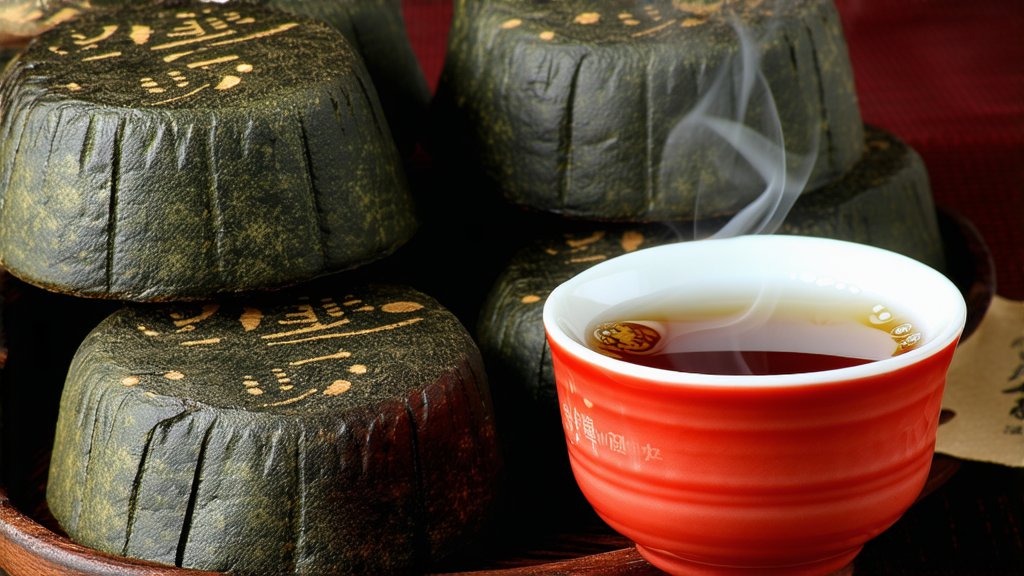
Pu'er tea, one of the most distinguished varieties within the realm of Chinese dark tea, stands as a testament to centuries-old traditions and the intricate artistry involved in its production. Originating from Yunnan Province, this unique tea has garnered global recognition not only for its complex flavors but also for its purported health benefits. As we delve into the depths of Pu'er tea, we uncover a fascinating narrative that spans history, geography, and cultural significance.
Historical Background
The origins of Pu'er tea can be traced back over 1,700 years to the Tang Dynasty, although it wasn't until the Ming Dynasty that it began to gain prominence. Legend has it that the tea was named after the market town of Pu'er, where tea merchants would gather to trade their goods along the ancient Tea Horse Road. This network of trade routes facilitated the exchange of tea between the diverse ethnic groups of Yunnan and Tibet, enriching the cultural tapestry of the region.
Varieties of Pu'er Tea
Pu'er tea is broadly categorized into two types: raw (Sheng) and ripe (Shou). Raw Pu'er undergoes natural fermentation over time, allowing the tea to age and develop its unique flavor profile. In contrast, ripe Pu'er undergoes a controlled fermentation process known as "wet piling," which accelerates the aging process. Both varieties offer distinct taste experiences, with raw Pu'er being more robust and astringent when young, mellowing with age, while ripe Pu'er is smoother and earthier from the outset.
The Art of Pu'er Tea Production
The journey from leaf to cup involves several meticulous steps. First, the leaves are plucked from ancient tea trees, often wild or semi-wild, which contribute to the tea's distinctive character. These leaves are then withered, rolled, and sun-dried. For raw Pu'er, the leaves are compressed into cakes, bricks, or other shapes and left to age naturally. Ripe Pu'er, on the other hand, undergoes a fermentation process where piles of damp tea leaves are left to ferment under controlled conditions for several weeks. After fermentation, the tea is dried and sorted before being pressed into its final form.
Appreciating Pu'er Tea: A Sensory Journey
To truly appreciate Pu'er tea, one must engage all senses. The ritual begins with the preparation of the tea. Breaking off a piece from a tea cake requires precision to ensure an even extraction. The leaves are rinsed briefly with boiling water to awaken their flavors. Subsequent infusions reveal a spectrum of aromas—earthy, woody, and occasionally floral—depending on the tea's age and storage conditions. The taste evolves with each sip, starting with a bold, slightly astringent front that gives way to a lingering sweetness and a deep, resonant finish.
The texture of Pu'er tea is another aspect worth savoring. Raw Pu'er tends to have a more astringent mouthfeel when young, which mellows with age. Ripe Pu'er offers a smoother, velvetier texture due to its accelerated fermentation process. Observing the color of the liquor, which ranges from bright amber to deep burgundy, adds another layer to the sensory experience.
Health Benefits and Cultural Significance
Beyond its exquisite taste, Pu'er tea is celebrated for its potential health benefits. It is believed to aid digestion, promote weight loss, and support cardiovascular health. The fermentation process increases the concentration of beneficial microorganisms and compounds, such as polyphenols, which contribute to these health properties.
Culturally, Pu'er tea holds a revered status in Chinese society. It symbolizes harmony, respect, and hospitality. Sharing a pot of Pu'er tea is a gesture of goodwill and a means of fostering connections. In many households and teahouses across China and beyond, the act of brewing and drinking Pu'er tea is a meditative practice, encouraging mindfulness and appreciation for life's simple pleasures.
Conclusion
Pu'er tea is more than just a beverage; it is a cultural artifact that encapsulates the essence of Chinese tea heritage. From its storied past to its meticulous production methods and nuanced flavors, Pu'er tea invites enthusiasts on a journey of discovery and enlightenment. Whether you are a seasoned connoisseur or a curious newcomer, exploring the world of Pu'er tea promises a rich and rewarding experience that transcends time and borders.